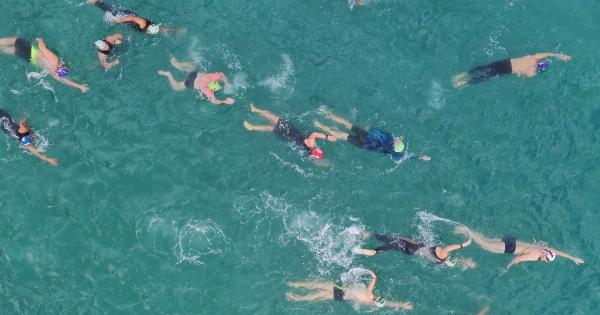Alzheimer’s disease is a neurodegenerative disorder that primarily affects older individuals and is characterized by memory loss, cognitive decline, and behavioral changes.
While the exact cause of Alzheimer’s is still unknown, researchers have been studying various risk factors that could contribute to the development of this debilitating condition. One intriguing finding in recent years is the high rate of Alzheimer’s among retired athletes.
The Link Between Sports and Alzheimer’s
Several studies have suggested that there may be a connection between participating in contact sports and an increased risk of developing Alzheimer’s.
The repeated blows to the head that athletes experience throughout their careers can lead to long-term brain damage, which may contribute to the onset of neurodegenerative disorders such as Alzheimer’s.
Evidence from Retired Football Players
Football, in particular, has received significant attention in this area of research. Many retired professional football players have reported experiencing memory problems, confusion, and other symptoms associated with Alzheimer’s disease.
A study published in the Journal of the American Medical Association found that retired NFL players are three times more likely to die from neurodegenerative diseases, including Alzheimer’s, compared to the general population.
Impact of Concussions
Concussions are a common injury among athletes in contact sports like football, hockey, and boxing. When an athlete suffers a concussion, their brain undergoes significant trauma that can have long-lasting effects.
Studies have shown that repeated concussions or subconcussive hits can lead to chronic traumatic encephalopathy (CTE), a degenerative brain disease that shares many similarities with Alzheimer’s. CTE is often found in postmortem examinations of individuals who have suffered repeated traumatic brain injuries.
Sports with High Risk of Traumatic Brain Injuries
In addition to football, there are other sports where the risk of traumatic brain injuries is high. Boxing, with its repeated blows to the head, has been associated with a higher incidence of cognitive decline and dementia.
Ice hockey, rugby, and soccer are also known for their risks of head injuries, and researchers have begun to investigate potential connections between participation in these sports and the development of Alzheimer’s.
Genetic Factors
While trauma to the brain appears to be a significant risk factor, it is important to note that genetics also play a role in the development of Alzheimer’s.
Some athletes may have a predisposition to the disease, which is only exacerbated by their sports-related injuries. Genetic testing and research are ongoing in order to better understand these interactions, as it could lead to new prevention and treatment strategies.
Protective Measures
Recognizing the risks associated with sports-related head injuries, many sports organizations and governing bodies have implemented measures to protect athletes.
Helmets, protective gear, and rule changes have been introduced to minimize the occurrence and impact of concussions. Improving safety protocols and providing education on the long-term consequences of head injuries are crucial steps in reducing the incidence of Alzheimer’s among retired athletes.
Support and Care for Retired Athletes
Retired athletes who are experiencing symptoms of cognitive decline or have been diagnosed with Alzheimer’s need comprehensive support and care.
Specialized programs and resources should be made available to assist these individuals and their families in managing the challenges posed by the disease. Rehabilitation services, counseling, and community engagement can significantly improve the quality of life for retired athletes living with Alzheimer’s.
Advancements in Research and Treatment
Understanding the underlying mechanisms that contribute to the high rate of Alzheimer’s among retired athletes is crucial for the development of better diagnostic tools and treatment options.
Ongoing research in the field of neurodegenerative diseases is exploring various avenues, including the role of protein aggregates, inflammation, and vascular factors in the pathogenesis of Alzheimer’s. By advancing our knowledge, we can hope to develop targeted therapies to slow down or prevent the progression of the disease.
Conclusion
The high rate of Alzheimer’s among retired athletes is a concerning phenomenon that highlights the importance of protecting the brain from trauma.
While sports-related head injuries cannot always be avoided, it is crucial to minimize their occurrence and ensure appropriate care for athletes. Further research is needed to fully understand the complex interaction between genetics, head injuries, and Alzheimer’s.
By working together, researchers, sports organizations, and the medical community can strive towards reducing the risk of this debilitating disease in retired athletes.




























